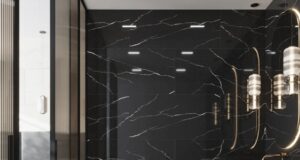Shaping commercial spaces with light control: the rise of architectural window films

Walk into any modern office, stylish restaurant, or bustling retail store, and you’ll likely notice it — a subtle but transformative layer across the windows. Architectural window films have steadily gained traction across commercial spaces, not just as a functional solution but as a tool for defining mood, privacy, energy savings, and even brand identity.
Gone are the days when window film was seen only as a heat shield or a way to prevent glare. Today’s films are design-forward, highly specialized, and engineered to meet a range of commercial needs. From mirrored privacy finishes in corporate buildings to matte partitions in wellness clinics, they shape how a space feels, functions, and communicates.
A strategic tool beyond glass
When business owners think about improving their interiors, lighting is usually high on the agenda. Yet the smart control of natural light often remains underused. That’s where commercial window film installation comes into focus. By filtering, reflecting, or diffusing sunlight, films regulate brightness without blocking the view entirely. In office environments, this means fewer headaches from glare, more comfortable computer work, and reduced reliance on artificial lighting.
Shops and retail boutiques benefit in a slightly different way. Light-sensitive merchandise like clothing, leather, and electronics often fade or degrade when constantly exposed to UV rays. Window films with UV-blocking properties help mitigate this, prolonging the life and visual quality of products on display. At the same time, they maintain an open, transparent storefront — essential for drawing in customers.
Privacy without walls
Not every workspace calls for blinds or bulky curtains. In places like clinics, coworking spaces, or wellness centers, the need for privacy must be balanced with a sense of openness. Matte films step in as a clean and modern solution. When applied to internal glass partitions or exterior windows, they provide discretion without making the area feel closed off.
Mirror films, on the other hand, offer one-way visibility — a smart choice for ground-level offices, meeting rooms, or security-sensitive areas. From the outside, they create a uniform reflective look, while the people inside still enjoy natural daylight and unobstructed views.
For restaurants, privacy has a different dimension. Diners often appreciate some visual separation from the outside world without feeling boxed in. This is where decorative or patterned films offer value. They can obscure certain sightlines while becoming a subtle design element, aligning with the brand’s personality — be it modern, classic, or avant-garde.
Branding, identity, and storytelling
Graphics on glass are no longer limited to logos on the front door. With the rise of digitally printed films, windows and glass walls have become storytelling surfaces. Whether it’s a frosted logo across a conference room or a full-color graphic panel in a retail setting, window film plays a growing role in branding.
The flexibility of design is a major asset. Films can be changed, updated, or removed without damaging the underlying surface — a practical advantage for businesses that rebrand or update their interiors periodically. This adaptability makes it easier to keep commercial environments fresh, relevant, and visually cohesive.
Energy savings that matter
Energy efficiency is no longer just a nice-to-have. With rising utility costs and growing environmental awareness, businesses are seeking smarter ways to manage their carbon footprint. Architectural window films contribute by reducing heat gain through windows, which helps maintain indoor temperature more consistently.
This is particularly impactful in Florida, California, and other sun-drenched regions, where air conditioning costs can be significant. Solar control films act as a thermal barrier, reducing the amount of heat entering the space during the day. In cooler seasons, they also help retain indoor warmth.
Over time, this translates to real savings — and reduced strain on HVAC systems. For building managers and facility planners, it’s an efficient step toward sustainability goals without needing to invest in costly infrastructure upgrades.
Why versatility wins in commercial environments
Each commercial space has a unique rhythm. A tech startup might want transparency between teams while shielding sensitive meeting areas. A dental clinic may want patients to feel comfortable without blocking natural light. A boutique hotel could use tinted panes to provide a sense of exclusivity while reducing solar glare during peak hours.
This is where the diversity of window film options proves its value. A tinted windows service doesn’t just offer one type of film but curates a selection based on layout, lighting, privacy needs, and brand image. The film becomes part of the design dialogue, not just a technical afterthought.
Moreover, installation is quick and non-disruptive. Unlike construction projects that require downtime, film can be applied during off-hours or even while the space remains operational. That makes it an attractive solution for busy environments that can’t afford to shut down.
A smart shift in thinking
Architectural films represent a quiet shift in how we think about the interaction between light, glass, and space. They’re not loud, not flashy — but they change the way a place feels. They control sunlight, add definition, protect what’s valuable, and communicate brand identity without saying a word.
For businesses looking to make thoughtful updates to their spaces, window film offers an intersection of function and subtle design strategy. It’s an investment in the quality of the working or shopping experience. Not just in how things look, but in how they work.
And in a world where customer comfort, staff productivity, and brand perception matter more than ever, that investment makes a lasting difference.
















